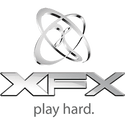
AMD Radeon RX 9070 XT Boosts up to 3.10 GHz, Board Power Can Reach up to 330W
AMD's upcoming Radeon RX 9070 XT graphics card can boost its engine clock up to 3.10 GHz, a new leak that surfaced on ChipHell says. Depending on the board design, its total board power can reach up to 330 W, the leak adds. The GPU should come with a very high base frequency for the engine clock, with the leaker claiming a 2.80 GHz base frequency (can be interpreted as Game clocks), with the GPU boosting itself up to 3.10 GHz when the power and thermals permit. The RX 9070 XT will be the fastest graphics card from AMD to be based on its next-generation RDNA 4 graphics architecture. The company isn't targeting the enthusiast segment with this card, but rather the performance segment, where it is expected to go up against NVIDIA's GeForce RTX 5070 series.
RDNA 4 is expected to introduce massive generational gains in ray tracing performance, as AMD is rumored to have significantly developed its ray tracing hardware, to reduce the performance cost of ray tracing. However, as it stands, the "Navi 48" silicon that the RX 9070 XT is based on, is still a performance-segment chip, which succeeds the "Navi 32" and "Navi 22," with a rumored compute unit count of 64, or 4,096 stream processors. Performance-related rumors swing wildly. One set of rumors say that the card's raster graphics performance is in league of the RX 7900 GRE but with ray tracing performance exceeding that of the RX 7900 XTX; while another set of rumors say it beats the RX 7900 XT in raster performance, and sneaks up on the RTX 4080. We'll know for sure in about a month's time.
RDNA 4 is expected to introduce massive generational gains in ray tracing performance, as AMD is rumored to have significantly developed its ray tracing hardware, to reduce the performance cost of ray tracing. However, as it stands, the "Navi 48" silicon that the RX 9070 XT is based on, is still a performance-segment chip, which succeeds the "Navi 32" and "Navi 22," with a rumored compute unit count of 64, or 4,096 stream processors. Performance-related rumors swing wildly. One set of rumors say that the card's raster graphics performance is in league of the RX 7900 GRE but with ray tracing performance exceeding that of the RX 7900 XTX; while another set of rumors say it beats the RX 7900 XT in raster performance, and sneaks up on the RTX 4080. We'll know for sure in about a month's time.














































































